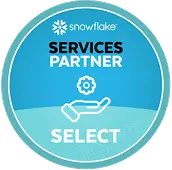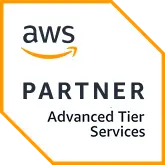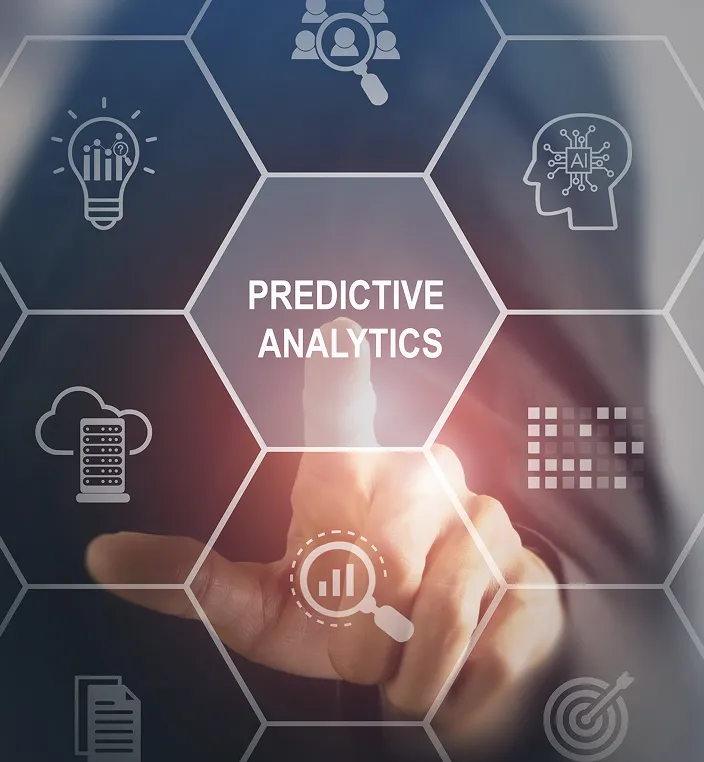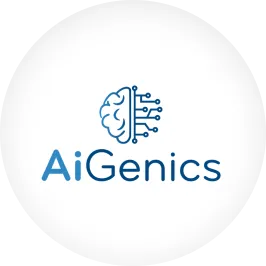Predictive Analytics Use Cases
Real-World Predictive Analytics Use Cases That Drive Smarter Decisions
What does it look like when data forecasts churn, flags a failing machine, or spots credit card fraud before it happens? These are the real-world use cases that matter.






The Growing Importance of Predictive Analytics
Predictive analytics has moved beyond trend reports and pilot programs. Today, it’s helping real businesses answer real questions: Will this customer churn next month? Which machine on the floor is most likely to fail? Is this transaction fraudulent? The value lies in its ability to turn historical data into future insight, before issues surface.
From forecasting product demand in retail to identifying early warning signs in patient health records, the use cases of predictive analytics are becoming core to how industries operate. This isn’t about experimenting with AI for the sake of innovation. It's about solving business-critical problems with models that have been trained on years of historical data, producing outcomes you can act on now.
As data volumes grow and decision-making windows shrink, predictive analytics is no longer a nice-to-have but it's a must-have. It’s becoming a competitive requirement. Companies that adopt it early aren't just reacting faster, but they're seeing around corners.

Why Predictive Analytics Drives Smart, Proactive Business Moves?
Built to forecast outcomes and inform real-time actions, predictive analytics helps companies reduce risk, cut costs, and build stronger customer relationships based on actual behavior rather than assumptions.
Smarter Retention, Higher ROI
Predictive models help identify which customers are likely to leave before they do. Companies that improve retention by just 5% can see profit jumps between 25% and 95%, depending on the industry, according to Sprinklr.
Reduced Downtime & Maintenance Costs
Industrial systems using predictive controls have reported up to 97% fewer system alarms and a 16.7% drop in energy consumption, helping teams prevent problems before they escalate, according to Arxiv.org.
Personalized Experiences That Drive Growth
Brands using predictive analytics to target one-time buyers have achieved a 12% growth rate by re-engaging only 3% of those customers—small shifts, significant returns, according to Predictive Analytics World.
Predictive Analytics in Action - Top 10 Industry Use Cases
See Where Predictive Analytics Delivers the Greatest Impact
Predictive analytics is no longer reserved for large-scale experiments—it’s reshaping day-to-day decision-making across sectors. Below are real-world examples of predictive analytics transforming industries by improving forecasting accuracy, reducing uncertainty, and driving measurable business outcomes.
Customer Lifetime Value Prediction
Retailers use predictive models to estimate the long-term value of individual customers. By analyzing past purchases, browsing behavior, and engagement patterns, businesses can identify high-value customers early and tailor loyalty programs or personalized campaigns to increase retention and revenue.
Demand Forecasting for Inventory Management
Real-time data combined with seasonal trends allows for highly accurate inventory predictions. Brands can avoid overstocking or stockouts, improving cash flow and reducing unnecessary storage costs. This use case of predictive analytics is particularly crucial during promotional periods or times of uncertain demand.
Credit Risk Modeling
Predictive analytics tools enable financial institutions to assess borrower risk by leveraging data beyond traditional credit scores, such as transaction behavior and historical payment patterns. These models improve loan approval decisions while reducing default rates.
Fraud Detection & Prevention
Banks and fintech platforms use machine learning to detect anomalies in transaction data, flagging suspicious activity. Predictive models analyze spending behaviors, login patterns, and geolocation data to detect fraud attempts early, often before the customer is aware of them.
Disease Progression Prediction
Hospitals and researchers utilize predictive analytics and AI use cases to analyze patient records and forecast the likely progression of chronic diseases. These models help personalize treatment plans, reduce complications, and improve long-term outcomes.
Hospital Readmission Risk Scoring
By analyzing clinical notes, discharge summaries, and patient history, healthcare providers can estimate which patients are most at risk for readmission. This enables more targeted post-care outreach and resource allocation.
Employee Attrition Prediction
HR teams utilize predictive analytics to identify employees who are likely to leave, based on factors such as tenure, engagement scores, promotion history, and even manager feedback. Early detection enables interventions that can improve retention.
Talent Acquisition Forecasting
Companies forecast future hiring needs by analyzing past recruitment cycles, turnover trends, and projected business growth. This helps ensure talent pipelines stay aligned with evolving workforce demands.
Property Price Forecasting
Predictive models use market trends, location data, interest rates, and property characteristics to forecast future property values. Buyers, sellers, and investors utilize these insights to make more informed, timely decisions.
Tenant Churn Prediction
Property managers utilize analytics to identify early warning signs of tenant churn, such as late payments or declining maintenance requests, enabling them to take proactive steps to retain tenants and prevent costly vacancies.
Predictive Analytics - Key Advantages
Predictive analytics goes beyond understanding the past — it anticipates what’s next, helping organizations turn forecasts into timely, effective actions that boost outcomes and reduce losses.
Smarter, Data-Backed Decisions
By using historical data to anticipate outcomes, predictive analytics allows leaders to act confidently, whether they’re launching a product, adjusting staffing, or shifting strategy.
More Accurate Forecasting
From retail demand to patient admission rates, predictive analytics improves planning by reducing guesswork. Better forecasts mean fewer surprises, smoother operations, and more reliable budgeting.
Early Risk Detection
Whether it’s fraud in financial transactions or equipment failure in manufacturing, predictive models help identify risks before they become disruptions, minimizing downtime and economic loss.
Smooth and Easy Operations
Predictive insights help teams manage inventory, allocate resources, and optimize processes based on what’s expected, not just what’s already happened.
Customised Customer Experiences
By anticipating what individual customers want or need next, businesses can deliver personalized experiences that improve engagement and retention without relying on one-size-fits-all approaches.
From Data to Foresight - Folio3’s Predictive Analytics Journey
Adasa Case Study - Data-Driven Transformation in Construction Project Management

The Challenge
Adasa, a construction and infrastructure company, faced significant hurdles managing a growing portfolio of large-scale projects. Key challenges included:
Data Overload
Massive volumes of data from IoT sensors, drones, and various management tools created complexity and slowed decision-making.
Integration Complexity
Disconnected systems made data unification difficult and hindered comprehensive analysis.
Real-Time Data Access
Limited visibility into live project data restricted stakeholders’ ability to respond quickly.
Need for Predictive Insights
The company lacked tools to forecast delays, assess risks, and optimize resource allocation.
Scalability Concerns
Their legacy infrastructure was unable to keep pace with the increasing volume of data and projects.
The Solution
Folio3 built a robust, cloud-based portfolio management platform customized to meet Adasa’s needs. The solution featured:
Centralized Data Integration
A unified data lake collected inputs from IoT devices, drones, and project tools to eliminate silos.
Real-Time Tracking & Monitoring
Using Apache Kafka and AWS Kinesis, the platform enabled live status updates and risk tracking.
Predictive Analytics & Insights
Machine learning models, utilizing AWS SageMaker and BigQuery, forecast potential delays and suggest optimal resource allocation.
Scalable Cloud Architecture
Deployed on AWS, the platform provided flexibility and performance to support seamless future growth.


The Results
60% Faster Decision-Making enabled
by real-time data analytics.
Improved Resource Utilization
through Intelligent Forecasting.
Reduced Delays and Risks
with predictive alerts and recommendations.
Enhanced project visibility through
custom dashboards for stakeholders.
A scalable solution for Future Growth
supports expanding portfolios.
Stronger Stakeholder Collaboration
through shared data access and transparency.
Why Folio3 Is Your Ideal Predictive Analytics Partner
At Folio3, we go beyond dashboards. We build predictive analytics engines that power intelligent decisions across industries.
Industry-Specific Expertise
From healthcare to oil & gas, our teams understand the unique challenges and data nuances of your sector.
End-to-End Solutions
We manage the entire lifecycle from data ingestion and modeling to deployment and visualization.
Proven Track Record
Trusted by global enterprises like Schlumberger, we deliver results that scale with your business.
Advanced Tech Stack
We utilize leading platforms, including Azure, Snowflake, and Databricks, to drive precision and performance.
Faster Time-to-Insight
Our solutions reduce time-to-insight by up to 50%, enabling you to act on data faster than ever.
Tech Stack That Powers Our Predictive Analytics
Folio3’s predictive analytics solutions are powered by a cutting-edge tech stack that ensures accuracy, scalability, and speed from data ingestion to actionable insights.
Cloud Infrastructure

Apache Kafka
Predictive Analytics

AWS RedShift
Data Integration and Ingestion

Apache Kafka

Kinesis
Data Storage and Management

Amazon S3

AWS RedShift
Predictive Analytics

BigQuery

Amazon Sagemaker
Visualization and Reporting

Power BI

Tableau
Turn Data into Foresight with Predictive Analytics
Use the power of predictive analytics to anticipate risks, optimize operations, and make data-driven decisions with confidence, whether you're in agriculture, construction, retail, or healthcare. Folio3 Data helps you go beyond data analysis to proactive insight.
Over 10,000 plus Happy retained clients
Real Results, Real Impact





Our Team
Built by Engineers. Led by Thinkers. Driven by Results.
At Folio3 Data, we turn data into impact — with sharp thinking, hands-on execution, and a drive to solve complex challenges.
We act as an extension of your team — collaborating, building, and delivering until it works.
Frequently Asked Questions
Which industries benefit most from predictive analytics?
Industries such as retail, healthcare, agriculture, finance, manufacturing, and construction benefit significantly from using predictive analytics to forecast demand, manage risk, optimize resources, and personalize services.
How does predictive analytics help in marketing?
Predictive analytics enables marketers to identify customer behavior patterns, segment audiences, personalize campaigns, forecast trends, and enhance customer retention through targeted strategies.
Can predictive analytics improve business operations?
Yes. Predictive analytics optimizes supply chains, reduces downtime, improves inventory management, allocates resources more efficiently, and enhances overall operational performance.
What are some real-world examples of predictive analytics?
Examples include predicting equipment failures in manufacturing, forecasting crop yields in agriculture, detecting financial fraud, and enhancing patient outcomes in healthcare.
Is predictive analytics only for large enterprises?
No. Small and medium-sized businesses can also leverage scalable predictive analytics tools to gain insights, boost efficiency, and drive growth.
What technologies power predictive analytics use cases?
Core technologies include machine learning, artificial intelligence, data lakes, cloud computing platforms (such as AWS and Google Cloud), and tools like BigQuery, SageMaker, and Power BI.
How accurate are predictive analytics models?
Accuracy depends on the quality of the data, the sophistication of the model, and ongoing optimization. With the proper setup, predictive models can achieve high reliability and continuously improve over time.
How long does it take to implement a predictive analytics solution?
Implementation time varies based on data complexity and business goals, but many solutions can be launched in 6–12 weeks with a phased, agile approach.
What’s the first step in applying predictive analytics to my business?
Start with a discovery session to identify business objectives, available data sources, and key pain points. From there, Folio3 will design a custom roadmap tailored to your goals.
Let’s Talk Data
Strategy!
Partner with our predictive analytics experts to streamline data workflows and turn forecasts into faster, insight-driven decisions.
Request A Call
Get in touch with our team to solve your queries.



